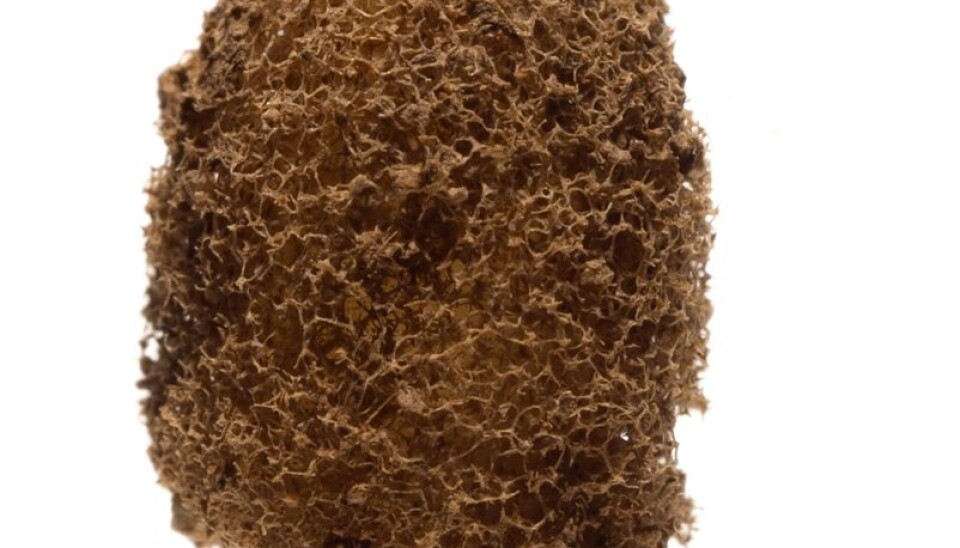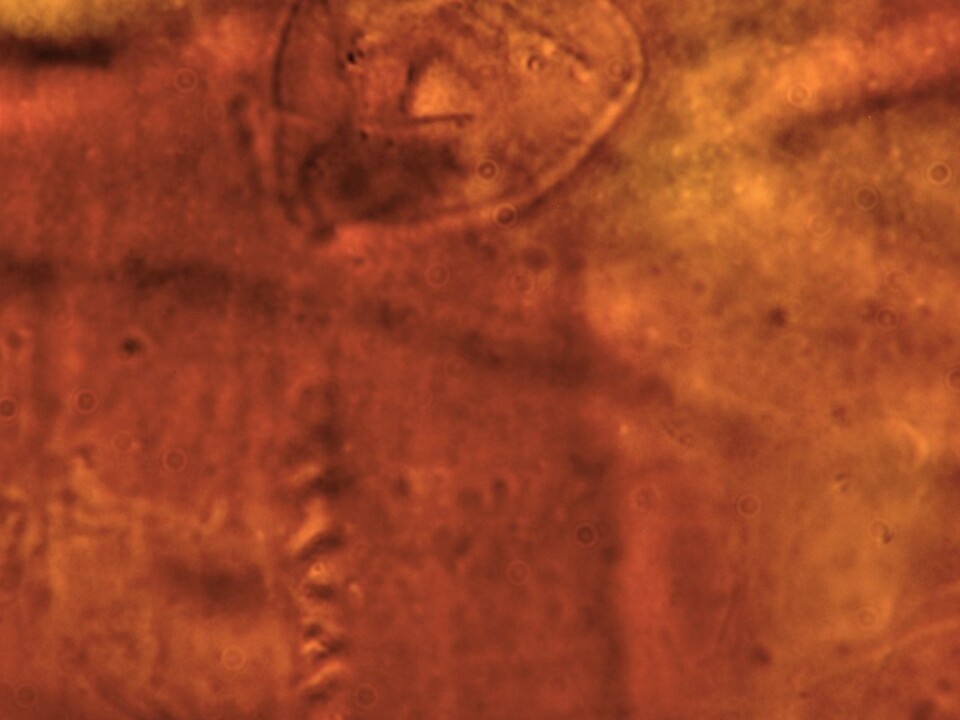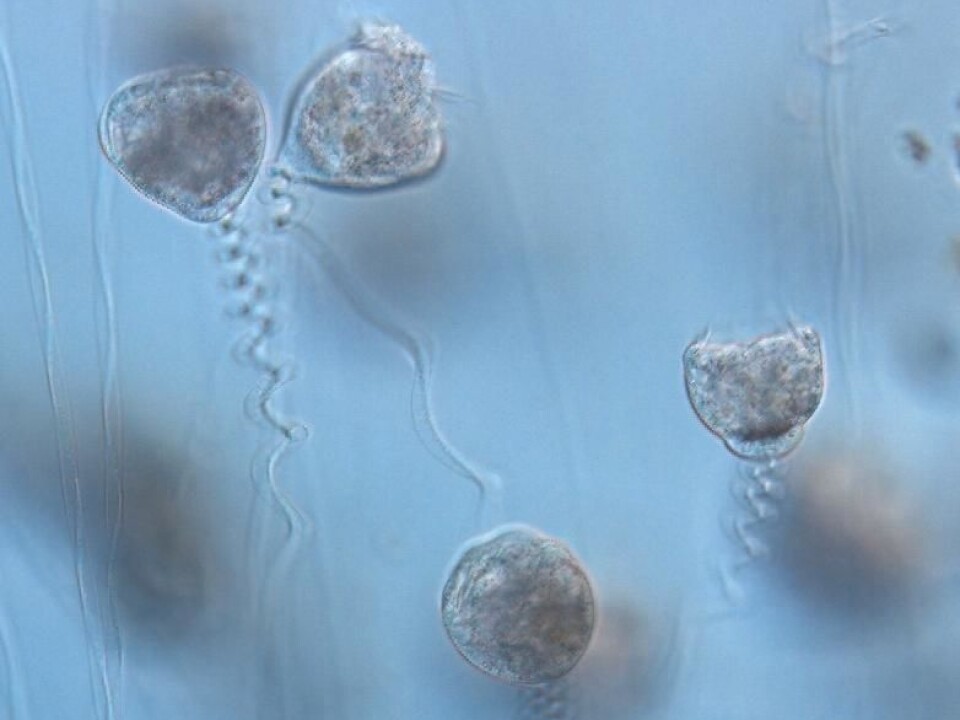
Prehistoric fossil preserved in a leech cocoon
For the first time ever, scientists can see the nucleus of an animal that lived at the same time as the dinosaurs.
Researchers have discovered a perfectly preserved ciliated protozoan, which appears identical to today’s unicellular ‘bell animals’ (Vorticella).
The Vorticella was embedded inside the wall layer of a more than 200 million-year-old leech cocoon. It was found in an amber-like sediment on Antarctica and is the only one ever that reveals the nucleus of an animal of this age.
The Danish researcher in this international study can hardly contain his excitement:
“When I saw picture of the fossilised Vorticella, I didn’t quite understand why my colleague showed me a picture of an ordinary Vorticella. I could find those in any Danish lake, I thought. When he then told me that the Vorticella was more than 200 million years old, my interest was aroused. The details in this unique fossil are remarkable,” says Professor Øjvind Moestrup, of Copenhagen University’s Department of Biology.

The discovery is published in the scientific journal PNAS.
Vorticella was stuck on a leech cocoon
The Vorticella was found in Timber Peak in Antarctica, where German researcher Benjamin Bomfleur was on the lookout for fossils of prehistoric plants.
Here he found a well-preserved fossil of a cocoon from a 200 million-year-old leech, which was encased in an amber-like, inorganic sediment.
Having examined the cocoon, Bomfleur spotted the Vorticella, which thanks to swift encapsulation had avoided bacterial degradation and thus had been preserved in perfect condition over 200 million years.

Bomfleur then turned to Moestrup to get the Vorticella identified.
“The special thing about this Vorticella is that it’s incredibly well preserved and very, very old,” says Moestrup.
“I don’t think that anyone has found such a well-preserved fossil of a unicellular animal that can be dated back more than 200 million years. The Vorticella is so well preserved that we can look inside it and see where the genes have been located and the area where the organs of movement have been attached.”
The fossil is a window to evolution
The ancient Vorticella provides the researchers with a unique opportunity to study evolution.
Although more than 200 million years separate today’s Vorticella species from ancient Vorticella species, they have not changed much.
It’s even possible that they may actually be the same species.
“I sent the pictures of the Vorticella to two of the world’s leading Vorticella experts,” says Moestrup.
“One of them told me that not only could he see it was a Vorticella; he also believed he could assign a species name to it. It’s astonishing if one species has existed unchanged for more than 200 million years.
“It would go against all ideas about how long a species can survive on Earth, so it’s not very likely. But if it’s not the same species, it’s a very closely related species.”
According to Bomfleur, the discovery of the Vorticella reveals a potential in cocoons when future research will look for fossils of organisms without hard parts, such as bones, shells, and wood, which otherwise have a very low potential to enter the fossil record.
Since our understanding of the evolution of life on Earth is limited by the imperfection of the fossil record, cocoons could help fill in some of the holes in our understanding of past fauna and flora.
--------------------------------
Read the Danish version of this article at videnskab.dk
Translated by: Dann Vinther







